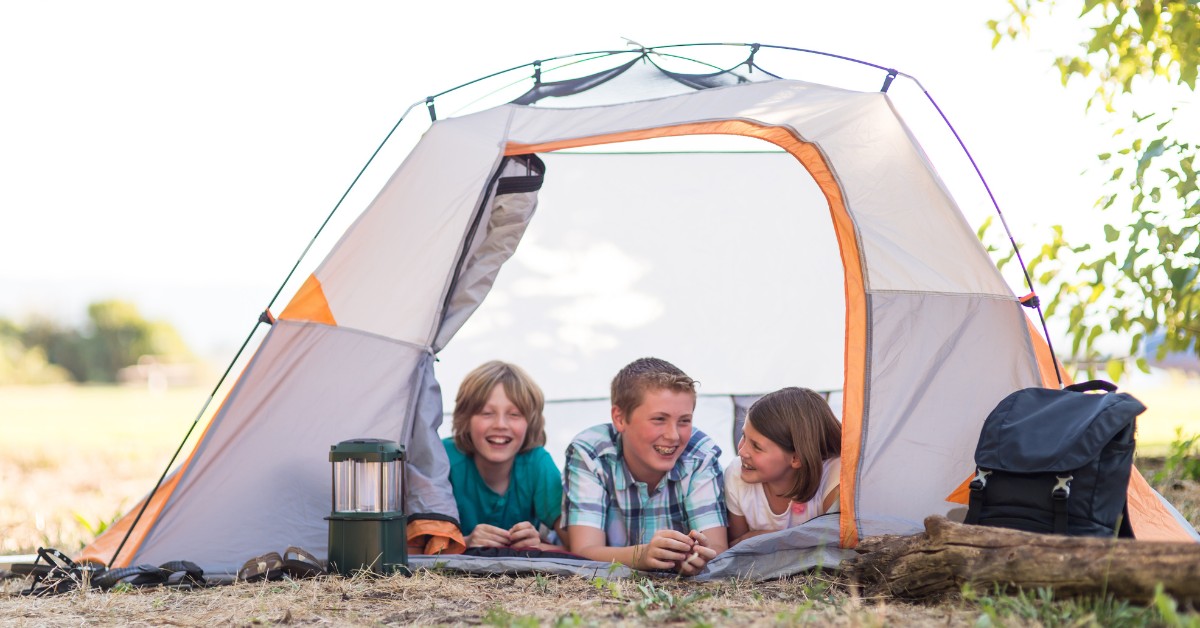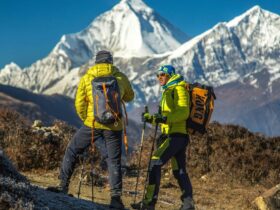Packing the right gear can make or break a camping trip, no matter how experienced someone is with the outdoors. The must-have items are a good tent, a warm sleeping bag, dependable lights, matched with the right food, water, and protective clothing for changing weather. Small things like insect spray, sunscreen, and a reliable power bank for devices can also make time outside much easier and more enjoyable.
Clothing is just as important as gear. Layered clothing works best for different temperatures and keeps campers dry and comfortable. Sturdy shoes, a waterproof jacket, and extra socks are necessary for most outdoor adventures. For those who plan to use their phone for photos or maps, it’s also smart to use protective Galaxy Z Flip 7 cases to keep their devices safe from accidental drops or bad weather.
Having the right items ready helps campers feel confident and safe, whether it’s their first trip or their tenth. Starting with the basics and adding a few smart extras can turn any camping trip into a fun and stress-free experience.
Important Camping Gear for All Skill Levels
A successful camping trip starts by packing items that keep everyone safe, comfortable, and prepared for surprises in nature. Picking gear with smart features and good materials makes outdoor time more enjoyable and much easier.
Shelter and Sleeping Solutions
A shelter that fits the camping setting is one of the first things to pack. For many, a dome-style or tunnel tent gives enough room and is simple to set up and take down. When choosing a tent, look for weather resistance, proper ventilation, and enough space for everyone sleeping inside. Bring a ground tarp to stop water from leaking in.
Sleeping gear makes a big difference in how well someone rests at night. Sleeping bags come in different temperature ratings, so match the one you choose with the season and local weather. An insulated sleeping pad or air mattress makes a hard surface much softer. For those who like a little more comfort, camping pillows are lightweight and easy to carry.
Proper clothing helps people stay warm and dry overnight, especially if the weather changes fast. Packing layers, including thermal underwear and a warm fleece or jacket, is smart. For extra comfort and support, pack an organic cotton bralette or other soft base-layer items. Fibers like wool or synthetic materials dry quickly and add warmth.
Cooking and Food Storage Equipment
Cooking at a campsite is easier with a portable stove or grill. Propane stoves with one or two burners are a popular choice since they are stable and heat up quickly. Remember to bring enough fuel and a lighter or matches sealed in a waterproof bag.
Cookware often includes a pot, a pan, a spatula, and some utensils. Many sets nest together to save space in a backpack. Lightweight plates, cups, and cutlery are usually made of plastic or stainless steel so they do not break easily. Handwashing gear, like a sponge and eco-friendly soap, keeps everything clean.
To prevent food from spoiling or attracting animals, use a cooler or an insulated food bag. Store snacks and meals in reusable containers to avoid waste. Pack out all trash and leftovers to keep the campsite clean and safe for wildlife.
Lighting and Power Sources
Lighting is important after the sun goes down. Headlamps and lanterns are good picks for both hands-free and area lighting. LED options give many hours of light without draining batteries fast. Carry backup batteries or pack a solar-powered light as a backup.
String lights add a cozy feel to the camp and can be strung up easily. A small flashlight in each person’s pack gives extra safety while exploring or using the restroom at night.
Charging phones or GPS devices is possible with portable power banks. Solar panels are handy for longer trips when there is plenty of daylight. Always keep lights and chargers easily accessible, especially for emergencies.
Navigation and Safety Tools
Staying on track is easier with maps and a compass or GPS device. Even if a phone works, always bring a paper map and know how to read it in case batteries die or there is no signal. A whistle is a simple safety tool to call for help if needed.
A first aid kit should include bandages, antiseptic wipes, tweezers, and any personal medicine. Check it before leaving to refill items and add anything for allergies or chronic health needs. Sunscreen and bug spray stop common outdoor problems before they start.
A multi-tool or a simple knife is useful for cutting rope, repairing gear, or opening food. Small duct tape rolls and patch kits fix holes or tears without hassle. Being ready for small issues keeps the trip running smoothly.
Advanced Gear to Improve Your Camping Experience
Smart choices in clothing, comfort items, and smart technology can make any camping trip smoother. Picking the right advanced gear can help campers deal with changing weather, make daily tasks easier, and stay connected.
Weather-Ready Apparel and Footwear
Proper apparel keeps campers comfortable in rain, heat, or cold. Waterproof jackets and pants block wind and moisture, while breathable shirts and base layers help control sweat. Layering clothes is important to stay warm at night and avoid overheating during the day.
Footwear matters just as much. Hiking boots with good traction help on rough trails. Lightweight camp shoes are useful for relaxing at the end of the day. Wool socks stay warm if they get damp, and quick-drying hats or gloves add extra comfort. A basic table for clothing recommendations:
| Item | Why It Matters |
| Waterproof jacket | Blocks rain and wind |
| Base layers | Keeps sweat off skin |
| Hiking boots | Good grip on rough trails |
Comfort and Convenience Accessories
Simple gear can make camp life more pleasant. Inflatable sleeping pads add cushion to hard ground, and compressible pillows take up little space but improve sleep. Compact camp chairs provide a place to sit after hiking.
Multi-use utensils, collapsible sinks, and foldable tables save space. Hanging lanterns and headlamps offer hands-free light at night. Mosquito nets and bug-repellent devices help keep insects under control. Towels that dry quickly are practical for swimming or wiping off after a rainy hike.
A short checklist for convenience:
- Inflatable sleeping pad or mat
- Small pillow
- Collapsible cookware
- Lightweight chair
- Fast-drying towel
- Hanging light
Tech Gadgets and Communication Devices
Modern camping often includes helpful gadgets. Portable solar panels keep small devices charged without needing a plug. Multi-purpose tools combine knives, scissors, and more in one item, which helps save weight. Weather alert radios let campers receive updates even without cell service.
Walkie-talkies make it easy to talk to others if the group splits up or phones lose signal. GPS devices and location beacons help with finding trails or getting aid in an emergency. Some small items, like digital thermometers, make managing campfires or cooking easier.
A summary table for tech gear:
| Gadget | Main Benefit |
| Solar charger | Keeps devices powered |
| Walkie-talkie | Group communication |
| GPS device | Navigation and tracking |
| Weather radio | Safety updates |
Conclusion
Being ready for a camping trip means packing the right gear, from tents and sleeping bags to cooking tools and safety items. These basic supplies help make any outdoor trip more comfortable and safe for everyone.
Clothing also plays a big part in having a good experience. Packing layers that fit the weather, extra socks, and waterproof gear can keep campers warm and dry. A hat and sunscreen can help protect from too much sun.
Organization makes camping smoother, whether someone is new or has camped many times before. Simple lists and careful packing help campers avoid forgetting important items.
By focusing on gear, clothing, and planning, campers of any skill level can get ready for a fun time outside. Small details, like a warm jacket or a flashlight, can make a big difference on any camping adventure.








Leave a Reply